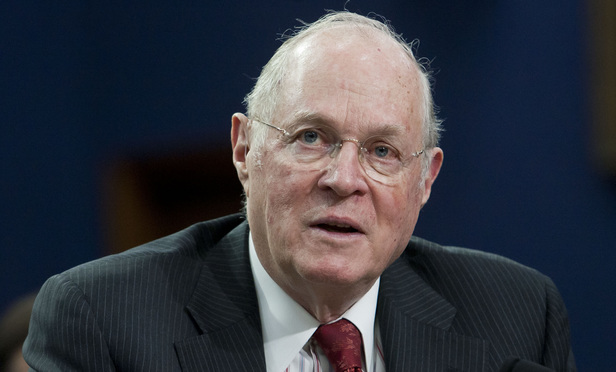Related: Justices Show Deep Divide Over Race in University Admissions
We highlight, below, key moments from the oral argument.
Ginsburg Dissents, Again
Justice Ruth Bader Ginsburg cribbed from her 2013 dissent in Fisher I that the University of Texas’ race-conscious admissions is not only constitutional, but that considerations of race actually pervade the university’s facially race-neutral top 10 percent plan.
GINSBURG: Let me ask you about the 10 percent plan itself, because it seems to me that that is so obviously driven by one thing only, and that thing is race. It’s totally dependent upon having racially segregated neighborhoods, racially segregated schools, and it operates as a disincentive for a minority student to step out of that segregated community and attempt to get an integrated education.
Another Remand?
Justice Anthony Kennedy asked about remanding the case to the trial court to collect additional facts that may aid the justices in their final decision, and over the course of the argument kept coming back to the idea with some ambivalence. Justice Antonin Scalia sought to pour cold water on the suggestion early in Kennedy’s exploration of the possibility.
KENNEDY: It does seem to me … that the litigants, and frankly this court, have been denied the advantage and the perspective that would be gained if there would be additional fact-finding under the instructions that Fisher sought to give. And that just—we’re just arguing the same case.
…
REIN: I think that the failure to [collect such facts by the University of Texas] indicates that the retreat to race was reflexive; was done on the day Grutter came down.
SCALIA: Not only that. Also the failure to put it in. It was their burden to put it in, wasn’t it?
REIN: Yes. And they knew that —
SCALIA: So we’re going to say, oh, they failed to put it in. Let’s give them another chance. Let’s do a do-over. Send it back down so they can now put in what they should have put in in order to prevail the first time around.
REIN: And I entirely agree with that.
Roberts Remains Skeptical
Chief Justice John Roberts Jr., citing the 2007 decision in which he wrote, “the way to stop discrimination on the basis of race is to stop discriminating on the basis of race,” was skeptical about the total benefit of Texas’ race-conscious admissions policy if it yielded only a few additional black and Hispanic students.
ROBERTS: But in Parents Involved, we indicated that at some point the actual benefit of the program turns out to be not really worth the very difficult decision to allow race to be considered if at the end of the day it generates a certain number. And I’m trying to figure out what that number is.
Roberts also focused on Justice Sandra Day O’Connor’s comment in the 2003 Grutter v. Bollinger decision upholding the University of Michigan School of Law’s affirmative-action program that such policies would no longer be necessary in 25 years:
ROBERTS: Grutter said that we did not expect these sort of programs to be around in 25 years, and that was 12 years ago. Are we going to hit the deadline? Is this going to be done in your view in 12 years?
GARRE: Your honor, I’m not here to give you a date, but what I would say is this: There are 18 systematic problems that these problems—that these policies are attempting to address, including the test-score gap between—between African-Americans and Hispanics. And—and the record in this case overwhelmingly shows that without the addition of race, student body diversity suffered, particularly among African-Americans.
ROBERTS: I understand. I don’t know whether that’s a yes or no. But it was important in the Grutter court that these were a temporary—as necessary, temporary expedience because we’re talking about giving you the extraordinary power to consider race in making important decisions. And we don’t do that as a matter of—matter of course. And so it was important in Grutter to say, look, this can’t go on forever, 25 years. And when do you think your program will be done?
GARRE: Your honor, as soon as we can achieve the same—sufficient numbers for the educational benefits of diversity without taking race into account, we will no longer take race into account.
Alito’s Clear Opposition to UT
Justice Samuel Alito Jr. suggested that the University of Texas should focus on addressing the “cultural bias” of SAT and ACT tests rather than “add race in as a special factor to counteract that” problem.
This content has been archived. It is available through our partners, LexisNexis® and Bloomberg Law.
To view this content, please continue to their sites.
Not a Lexis Subscriber?
Subscribe Now
Not a Bloomberg Law Subscriber?
Subscribe Now
LexisNexis® and Bloomberg Law are third party online distributors of the broad collection of current and archived versions of ALM's legal news publications. LexisNexis® and Bloomberg Law customers are able to access and use ALM's content, including content from the National Law Journal, The American Lawyer, Legaltech News, The New York Law Journal, and Corporate Counsel, as well as other sources of legal information.
For questions call 1-877-256-2472 or contact us at [email protected]






